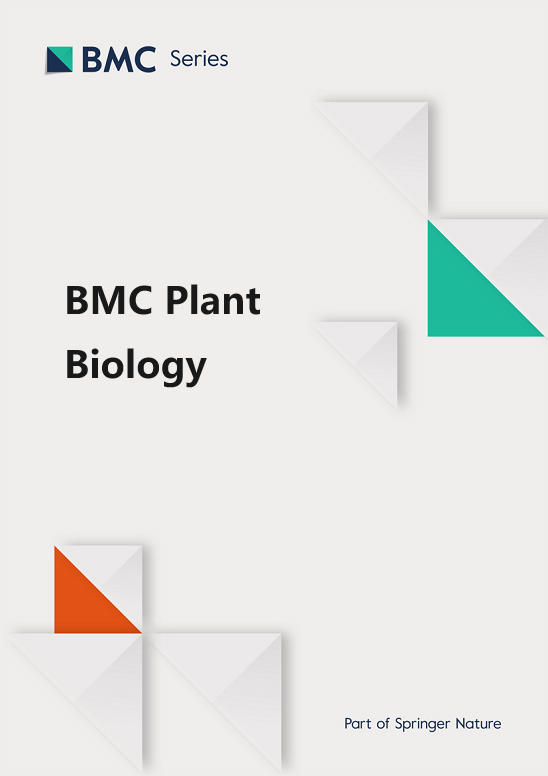Comprehensive comparative analysis and development of molecular markers for Lasianthus species based on complete chloroplast genome sequences
IF 4.3
2区 生物学
Q1 PLANT SCIENCES
引用次数: 0
Abstract
Lasianthus species are widely used in traditional Chinese folk medicine with high medicinal value. However, source materials and herbarium specimens are often misidentified due to morphological characteristics and commonly used DNA barcode fragments are not sufficient for accurately identifying Lasianthus species. To improve the molecular methods for distinguishing among Lasianthus species, we report the complete chloroplast (CP) genomes of Lasianthus attenuatus, Lasianthus henryi, Lasianthus hookeri, Lasianthus sikkimensis, obtained via high-throughput Illumina sequencing. These showed CP genomes size of 160164-160246 bp and a typical quadripartite structure, including a large single-copy region (86675–86848 bp), a small single-copy region (17177–17326 bp), and a pair of inverted repeats (28089–28135 bp). As a whole, the gene order, GC content and IR/SC boundary structure were remarkably similar among of the four Lasianthus CP genomes, the partial gene length and IR, LSC and SSC regions length are still different. The average GC content of the CP genomes was 36.71–36.75%, and a total of 129 genes were detected, including 83 different protein-coding genes, 8 different rRNA genes and 38 different tRNA genes. Furthermore, we compared our 4 complete CP genomes data with publicly available CP genome data from six other Lasianthus species, and we initially screened eleven highly variable region fragments were initially screened. We then evaluated the identification efficiency of eleven highly variable region fragments and 5 regular barcode fragments. Ultimately, we found that the optimal combination fragment' ITS2 + psaI-ycf4' could authenticated the Lasianthus species well. Additionally, the results of genome comparison of Rubiaceae species showed that the coding region is more conservative than the non-coding region, and the ycf1 gene shows the most significant variation. Finally, 49 species of CP genome sequences belonging to 16 genera of the Rubiaceae family were used to construct phylogenetic trees. Our research is the first to analyze the chloroplast genomes of four species of Lasianthus in detail and we ultimately determined that the combination fragment' ITS2 + psaI-ycf4' is the optimal barcode combination for identifying the genus of Lasianthus. Meanwhile, we gathered the available CP genome sequences from the Rubiaceae and used them to construct the most comprehensive phylogenetic tree for the Rubiaceae family. These investigations provide an important reference point for further studies in the species identification, genetic diversity, and phylogenetic analyses of Rubiaceae species.基于完整叶绿体基因组序列的 Lasianthus 品种分子标记的综合比较分析与开发
桔梗被广泛用于传统中药中,具有很高的药用价值。然而,由于形态特征的原因,原始材料和标本馆标本经常被误认,而常用的 DNA 条形码片段也不足以准确鉴定桔梗属植物。为了改进分子鉴定方法,我们报告了通过高通量 Illumina 测序获得的 Lasianthus attenuatus、Lasianthus henryi、Lasianthus hookeri 和 Lasianthus sikkimensis 的完整叶绿体(CP)基因组。它们的 CP 基因组大小为 160164-160246 bp,具有典型的四方结构,包括一个大的单拷贝区(86675-86848 bp)、一个小的单拷贝区(17177-17326 bp)和一对倒位重复区(28089-28135 bp)。从整体上看,4个Lasianthus CP基因组的基因顺序、GC含量和IR/SC边界结构非常相似,但部分基因长度和IR、LSC和SSC区长度仍有差异。CP基因组的平均GC含量为36.71%-36.75%,共检测到129个基因,包括83个不同的蛋白编码基因、8个不同的rRNA基因和38个不同的tRNA基因。此外,我们将 4 个完整的 CP 基因组数据与其他 6 个 Lasianthus 品种的 CP 基因组数据进行了比较,初步筛选出 11 个高变异区片段。然后,我们评估了 11 个高度可变区片段和 5 个常规条形码片段的鉴定效率。最终,我们发现最佳组合片段'ITS2 + psaI-ycf4'能很好地鉴定腊梅属植物。此外,茜草科植物基因组比较结果表明,编码区比非编码区保守,其中 ycf1 基因的变异最为显著。最后,我们利用茜草科 16 属 49 个物种的 CP 基因组序列构建了系统发生树。我们的研究首次详细分析了四种茜草属植物的叶绿体基因组,并最终确定'ITS2 + psaI-ycf4'组合片段是鉴定茜草属植物的最佳条形码组合。同时,我们收集了茜草科现有的 CP 基因组序列,并利用这些序列构建了最全面的茜草科系统发生树。这些研究为进一步研究茜草科植物的物种鉴定、遗传多样性和系统发育分析提供了重要参考。
本文章由计算机程序翻译,如有差异,请以英文原文为准。
求助全文
约1分钟内获得全文
求助全文
来源期刊

BMC Plant Biology
生物-植物科学
CiteScore
8.40
自引率
3.80%
发文量
539
审稿时长
3.8 months
期刊介绍:
BMC Plant Biology is an open access, peer-reviewed journal that considers articles on all aspects of plant biology, including molecular, cellular, tissue, organ and whole organism research.
 求助内容:
求助内容: 应助结果提醒方式:
应助结果提醒方式:


